THE BLACK PERIGORD
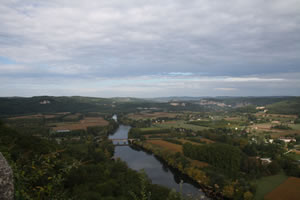
Part of the Aquitaine region in Southwest France, Dordogne Périgord is one of the largest and most picturesque counties in France, as well as being one of the most prolific in terms of its number of listed historic buildings.
The Dordogne Périgord is divided into four colours which highlight the diversity of its landscapes: Périgord Vert (Green Périgord), Périgord Blanc (White Périgord), Périgord Pourpre (Purple Périgord) and Périgord Noir (Black Périgord)
The Black Perigord (‘black’ as in the thick oak and chestnut forests) is one of the most attractive parts of the Dordogne. This area, renowned for its gastronomic traditions, relaxed way of life and internationally renowned cultural sights, is the perfect destination for a short break or longer holiday.
Here you will discover unspoilt nature, grandiose landscapes and a plethora of magical sights teeming with history: the prehistoric deposits and caves in the Vezère valley, which bear witness to the presence of man in the Dordogne for the past 450,000 years; castles from the Middle Ages and Renaissance periods ; medieval villages full of character ; romanesque churches adorned with sculpted tympanums; water mills in the romantic landscapes; and renowned "towns of art and history" such as Sarlat.
LE PAYS DE L'HOMME
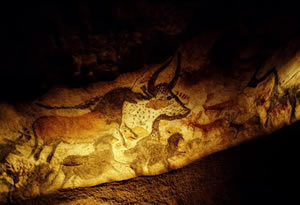 The Black Périgord is home to more than 60 prehistoric sites many of which are registered UNESCO sites, including a number of the decorated caves in the Vézère valley where homo sapien man took refuge. Many have been restored and you can learn in a more light-hearted fashion about the dawn of humanity.
The Black Périgord is home to more than 60 prehistoric sites many of which are registered UNESCO sites, including a number of the decorated caves in the Vézère valley where homo sapien man took refuge. Many have been restored and you can learn in a more light-hearted fashion about the dawn of humanity.
Another of the Périgord Noir's world famous sights is the renowned prehistoric cave at Lascaux, near Montignac, nicknamed the Sistine Chapel of the Prehistory. Today, the original being no longer open to the public, the site of Lascaux II is home to an exact replica of the original paintings created by our ancestors.
A concentration of celebrated sites is found at Les Eyzies de Tayac, where the town and many surrounding villages are rich in prehistoric treasures: paintings in the caves of Font de Gaume , Bara-Bahauor the etchings of Combarelles, of l’Abri de Poisson, or also of the cave of Rouffignac St Cernin
At the heart of this historic region,, the National Prehistoric Museum reflects an ongoing archeological expansion. Re opened in 2004, this museum has the largest Palaeolithic collection in France.
To find out more : www.pole-prehistoire.com
A THOUSAND AND ONE CASTLES
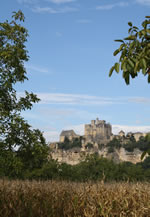
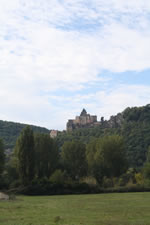
The Perigord is the land of a thousand and one castles, offering a huge range of architectural styles, from the austerity of the Middle Ages, to the opulence of the Renaissance. Their sculpted stones, massive keeps and watchtowers blend into the natural beauty of their sites.
• le Château de Beynac ;
• le Château de Castelnaud ;
• le Château des Milandes ;
•
le Château de Commarque ;
•
le Château de Biron ;
•
le parc du Château de Marqueyssac.
CHARMING VILLAGES AND BASTIDES
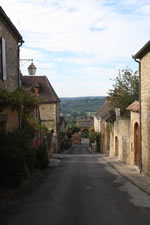
Numerous villages in the Perigord are renowned for their beauty and their authenticity.
Some even benefit from the national classification of « most beautiful villages of France », namely Saint Jean de Cole – Saint Leon sur Vezere – Limeuil, medieval city at the confluence of the Vezere and the Dordogne rivers – Beynac – La Roque Gageac, at the foot of a cliff on the banks of the Dordogne – Domme, royal French bastide – Belves, medieval city with seven bell towers – Monpazier, English bastide – and Saint Amand de Coly, the latest to gain its classification.
Lovers of the local stone will delight in wandering the picturesque streets and alleyways.
Sarlat, the jewel in the crown of the Périgord Noir’’
Sarlat is one of the most famous towns for medieval art and history in France and has the highest number of listed buildings per square metre in Europe with 253 buildings, 18 listed monuments and 59 registered monuments on 11 hectares. It is a real jewel of the Renaissance and Medieval periods. It’s mellow stone buildings look wonderful by day, but at nightfall, lit by gentle streetlights they take on a special atmosphere where each street, alleyway and stone tells a story.
Périgueux, the Capital of the Dordogne
This town's origins go back to 2,000 years to its foundation in Roman times. It boasts 39 listed buildings in one of the largest protected zones in France. Since 2003 the ancient city of Périgueux has a new museum – the Gallo Roman Vesunna, designed by the architect Jean Novello.
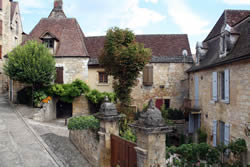
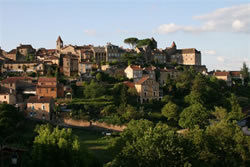
GROTTES ET GOUFFRES
The black Perigord invites the curious amongst us to discover an underground world of magnificent crystallisations, stalactites and stalagmites in magnificent forms.
• Le Gouffre de Proumeyssac in Audrix :• Les Grottes de la Halle in Domme
• The cave of Grand Roc in Les Eyzies de Tayac
• The cave of Maxange in Buisson de Cadouin
The unspoilt landscapes and varied scenery of the Périgord Noir offer the perfect backdrop for all sorts of outdoor activities. Discover the hidden beauty of the region by hiking, horse riding or mountain biking through the countryside. The Périgord Noir is also a region of rivers, with the majestic Dordogne and Vézère. The constant presence of water encourages other leisure pursuits, such as fishing, swimming and canoeing - or you may like to take a boat trip on a flat-bottomed gabarre, with magnificent views of our impressive châteaux guaranteed!
THE COUNTRYSIDE ACTIVITIES
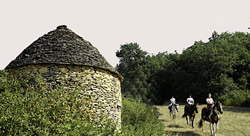
On foot: In the Perigord there are almost 1130 km of GR footpaths. Amongst them is a section of the pilgrim road to Saint James, and the GR36 which winds along the prehistoric sites of the Vezere valley.
Another strong point is the 5600km of round circuits.
On bicycle: The majority of these paths are also open to mountain biking. For cycling amateurs, the Perigord offers over 2000km of cycle routes on 28 road circuits.
On horseback: There is plenty of open space for trying out horse riding or trekking. “Le Perigord à cheval” proposes to amateur horse riders a network of over 900 km of pathways, linking different inns waiting to welcome both riders and their horses.
CANOE-KAYAK
Spend an unforgettable day in Périgord Noir and to go down the Dordogne or Vezere rivers.
A GOLFING DESTINATION
The Périgord boasts no fewer than four courses with 18 holes or more, and three 9-hole courses, ensuring that golfers of all levels can enjoy their passion for the little white ball!
• Golf de l’Olivarie and Golf de la Forge, in Siorac-en-Périgord
•
Golf de la Marterie in Saint-Felix de Reilhac
•
Golf du Domaine de Rochebobois in Vitrac
ADVENTURE CIRCUITS
Why not enjoy a family adventure in the shade of the ancient oaks of Perigord ?
• Air Parc Périgord, in Saint-Vincent-de-Cosse
• La Foret des Ecureuils, inà Saint-Vincent-Le-Paluel
• Indian Forest in Carsac
LEISURE PARKS AND WATER PARKS
Cooling off in a specially built leisure park is a great day out for all the family – these leisure parks offer superb, refreshing activities for all.Aux étangs du Bos : Leisure park in 7 hectares with fishing and swimming lakes, an aquapark, swimming pools, a 500m² skating rink, 4 water slides
Jacquou Parc : Attraction park with rides, swimming pools and an aquapark.
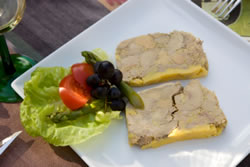
In the Périgord Noir, gastronomy is a way of life
Many guidebooks claim that "the Périgord Noir is a region that is best appreciated through its cuisine". Nature has blessed the region with an abundance of excellent produce, such as foie gras, truffles, cep mushrooms, sweet chestnuts, walnuts, strawberries, cabécou goats' cheese, wine, preserved duck and goose products, pork-based specialities, as well as delicious pastries.
Périgord is also a land of rivers so it is not surprising that crayfish, carps and pikeperch should find their way into many of the restaurants menus. The local dry white Bergerac wines constitute the ideal match to these fish dishes.
A huge selection of regional produce can be admired and tasted at the many local markets which are full of scents and colors. Every single village in the region seems to display the abundance of quality products and people, natives and tourists alike, flock to the markets all the year round.
Thus, in the autumn, people come to the markets in search of walnuts, ceps and chestnuts, from Montignac, Sarlat and Villefranche du périgord. During the winter months, from November to March, the atrraction is the “gras’ from Ribérac, Périgueux or Sarlat.No matter what season it is, the markets in Périgord are always a delight for the eye and a paradise for the taste buds.
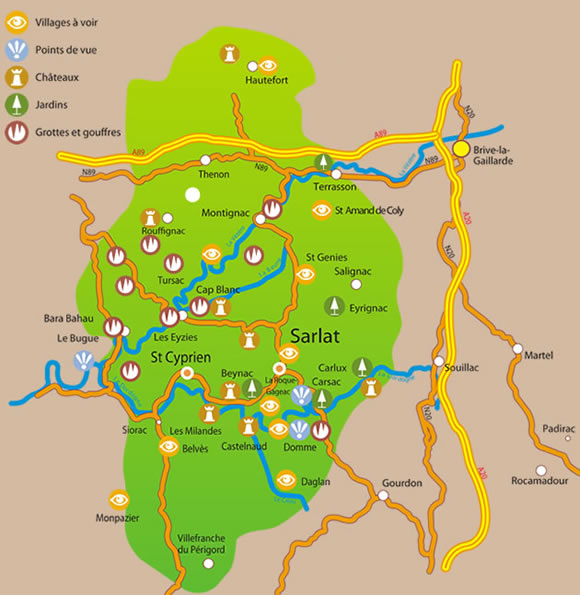
BY PLANE
• Bergerac airport : numerous daily flights connecting to major cities such as London, Edinburgh, and Amsterdam.
• Brive airport : daily flights from London and Paris
• International airports of Bordeaux and Toulouse , for easy access to the the Dordogne region – only 2 hours drive.
BY CAR
• Motorways :
- A20 from Paris to Barcelona : exit at Souillac or at Brive
- A89 From Bordeaux to Lyon : exit at Périgueux
BY TRAIN
• From Paris to Toulouse : stop at Brive (Corrèze) or Souillac (Lot). Bus connexion from Brive to Sarlat
• From Paris to Agen : stop at Périgueux. Connexion by bus to Sarlat
• From Bordeaux to Lyon : stop at Périgueux or at Brive railway stations
• From Paris to Bordeaux : speed train to Libourne and local TER train from Libourne to Sarlat (crossing St Cyprien’s railway station)
You may find the SNCF website useful to plan your route.
EN SAVOIR PLUS
Pays touristiques du Périgord Noir : http://www.perigordnoir.com/









